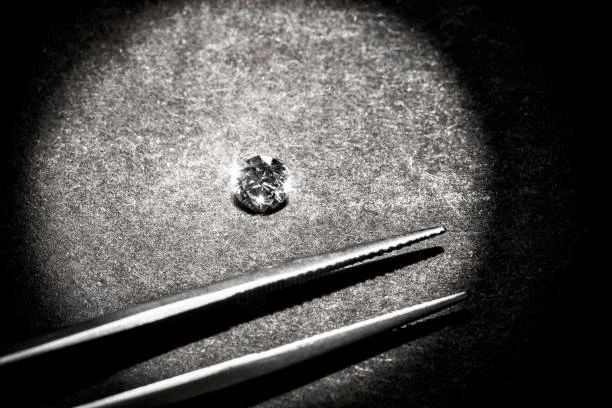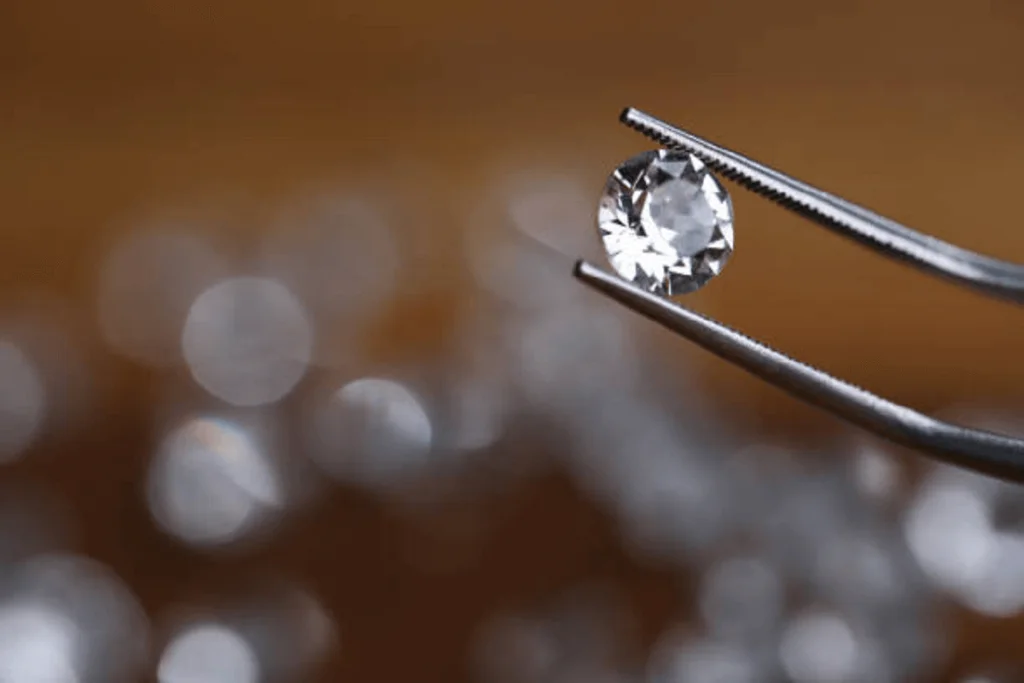Have you ever received a dazzling diamond but questioned its authenticity? Rest assured, you’re not alone; thousands of diamond collectors feel the same way! It’s essential to know how to see if a diamond is real, ensure that you’re getting your money’s worth, and make informed purchases.
Now, if you’re wondering how to solve your diamond dilemma, we’ve got the perfect, handy, and reliable tool for you! The VEVOR Flashlight is your knight in shining armor, helping you know how to test if a diamond is real.
As you dig deeper into this guide, you’ll not only discover the unique features of VEVOR Flashlight, but you’ll also learn all the juicy details about diamonds and their properties. This includes a clear guide on how to tell if diamonds are real with flashlights.
Table of contents
Why Diamonds Sparkle and How Fakes Falter
This section is your gateway into the world of how the shine of diamonds works and how to tell if a diamond is real at first glance. Here, you’ll get familiar with terminologies usually used in the gem business.
A Diamond’s Dazzling Dance: The Science Behind Brilliance
Diamonds are important minerals, and when you find an original, natural diamond, you can’t help but notice the beautiful shine it carries; this significant feature can help you simplify the process of how to see if a diamond is real.
The shine and glimmer you see from a real diamond are brought to life by a high reflection of light from the surface of a finely cut diamond. These streaks of gray and white light you see are termed “brilliance,” and they’re accompanied by rays of color known as “fire” when a flashlight comes in contact with it.
The Telltale Signs: How Fakes Fail to Mimic a Diamond’s Shine
For fake diamonds, these intricacies are very missing, and you usually don’t need the help of an expert on how to test if a diamond is real.
A fake diamond will not reflect light the way a natural diamond would, like the cubic zirconia, white sapphire, and topaz, which may exhibit brilliance when you shine light on them and have a striking resemblance to natural diamonds. As I mentioned above, always check for that sparkle of light and colored light that’ll illuminate the surface of your stone when you use a flashlight on it; the absence of this means your diamond is a serious fake.
You can also turn your diamond upside down on the flashlight surface for a closer look at the spectrum of light that peeks through your stone. If you get rainbow-inspired feedback, then you have a real gem on your hands.
How to Tell if a Diamond is Real with a VEVOR Flashlight

This section is an exhaustive guide on how to see if a diamond is real by using a flashlight.
VEVOR Flashlight: Your Pocket-Sized Diamond Detective
The key features of the VEVOR flashlight position it as precisely what you need to point you in the right direction and answer all the questions surrounding the state of your stone.
This tool combines cutting-edge technology and straightforward usage to give you an accurate analysis of your diamond like the powerful high-lumen LED light that provides a focused spotlight up to 150 meters for you to carry out your sparkle test.
The flashlight also comes with five modes of adjustable focus for different purposes, from spot beam to flood bean, which means you can expand or reduce the light coverage to work with the size of your stone.
VEVOR flashlight is easy to use for any age and experience level. Whether you are a buyer or a vendor who needs to convince a buyer, you’re absolutely equipped to handle this tool and find out how to tell if diamonds are real.
The Flashlight Test: A Step-by-Step Guide
You must know that not all REAL diamonds reflect an equal amount of light. Lab-grown and natural diamonds reflect more light and have a high level of clarity, too. This should be the principle guiding your diamond testing process, especially when working with a flashlight.
Materials you need
- VEVOR flashlight
- A white paper with a small dot
- Tweezer to hold your gem
- Magnifying glass for closer inspection
Now, let’s dive into the task of the day: how to use a flashlight to detect your diamond’s realness.
- Of course, get your flashlight fully charged and ready to do the work. VEVOR flashlights are the best option in town.
- Make sure your room is dimly lit to get a perfect contrast for a better view and hold the flashlight a short distance above your stone.
- Observe keenly for how the light reflects back on your diamond. A natural diamond should create patterns of brilliance (scattered white light) and fire (flashes).
- Move to double-check with your white paper and use your pencil to draw a dot on the surface. Position your diamond directly above this dot and turn on your flashlight to shine it above the diamond cast over the dot.
- You can then check the diamond from the top. If you have a natural stone in your hands, you’ll see the dot in full glare because it bends and sprays the light. If the dot is distinct and stable, you’re probably holding another stone or just a simple glass.
If you’re still wondering, ‘How do I tell if a diamond is real,’ here’s an extra video for your practice.
Beyond the Basics: Pro Tips for Using a Flashlight Effectively
Here’re extra tips to help you answer how to tell if a diamond is real.
- Ensure you use a dark environment for optimal results, as surrounding lights can distort the diamond’s sparkle. Since you’re doing your testing with a spotlight style, it’s very advisable you keep the area pitch black.
- We also recommend that you check multiple facets of the diamond for consistency. You can’t base your judgment on just half confirmation (hello, fake diamonds exist, and they, in fact, shine!). We’re looking for all-around and total brilliance, sparkle, and fire in any diamond, and you should be patient enough to confirm that, too.
Other Methods of How to Tell If Diamonds Are Real

Flashlight test is great, no doubt, but it comes with a few limitations as it might not detect common fakes like synthetic diamonds, which have a structure similar to natural diamonds and thus can sparkle under a flashlight. However, there are other tests you can do on how to tell if a diamond is real and clear up any inconsistencies from your flashlight tests.
Most importantly, you can carry out these tests in the comfort of your home with a few common products around you.
The Water Test: A Simple Density Check
How do you tell if a diamond is real with water?
It is believed that a real diamond is dense, and to confirm this scientific claim, you can fill a bowl with ¾ quantity of water and drop the stone in it. You’ll know if it’s a real diamond if it sinks due to the heaviness or if it’s a fake one if it floats.
However, there’s an exception to this test: Most stones that aren’t diamonds are dense and will sink just like a diamond would when thrown into water.
The Fog Test: Observing Condensation Disappearance
How do I tell if a diamond is real with a fog?
This diamond test is a less intense method of determining the stone’s ability to conduct heat. All you need to do is place the diamond between two figures at a very visible angle and slowly breathe on it.
If the fog from your warm breath immediately clears up, it may mean the stone is a real diamond. However if it remains for a few seconds to minutes, this means the stone is a poor conductor of heat and, hence, a fake diamond. However, surface treatments can affect the outcome of your result, so always double-check.
Consulting a Gemologist: The Ultimate Authority
Now, when all other methods have yet to convince you of the actual status of your diamond, a gemologist can help you know how to tell if a diamond is real.
Consulting a diamond expert is the easiest and most accurate way to determine the quality of what you’re holding. You’ll mostly find these tools on their tables, so you know you’re at the right place.
- A microscope
- Chelsea dichromatic filter
- Gemstone tweezers
- Color grading & UV lamps
- A precise balance scale
- A diamond tester
- Polariscope
- A magnifying glass (10x loupe)
VEVOR Flashlight- Your Diamond Ally

Using the VEVOR flashlight for your diamond testing ensures you get clear and concise feedback on the authenticity of your stone and saves you the distress of making the wrong purchase or wasting your search efforts. Whether you’re an explorer, collector, or end-user buyer, the VEVOR flashlight is your ally in quality assurance, no matter the number of diamonds you’re working with.
Use the flashlight according to the steps provided in this guide, and you’ll get your verdict timely and hassle-free. The best thing is that you don’t have to break a sweat on how to tell if diamonds are real with this affordable method.
Conclusion
A diamond’s authenticity is directly connected to its usage, longevity, and your satisfaction as a collector, as you don’t want to own, pass down, or gift a fake diamond with the impression that they’ve been real all along.
With the VEVOR flashlight, all your worries are addressed, and now you know how to tell if diamonds are real without taking long trips to the tester store or wasting time standing in line for your verdict—your solution is right there in your toolbox.
We encourage you to utilize the information and facts provided in this guide to help you distinguish between fakes and legitimate stones. We want you to shape your decision the next time you visit a diamond store, whether as a first-timer or a regular collector.
Do your testing the VEVOR way and embrace a new habit of getting quality diamonds no matter the time, season, and place.





